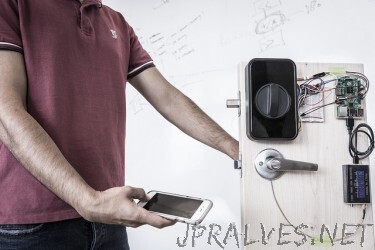
“Sending a password or secret code over airborne radio waves like WiFi or Bluetooth means anyone can eavesdrop, making those transmissions vulnerable to hackers who can attempt to break the encrypted code. Now, University of Washington computer scientists and electrical engineers have devised a way to send secure passwords through the human body — using benign, low-frequency transmissions generated by fingerprint sensors and touchpads on consumer devices.”
